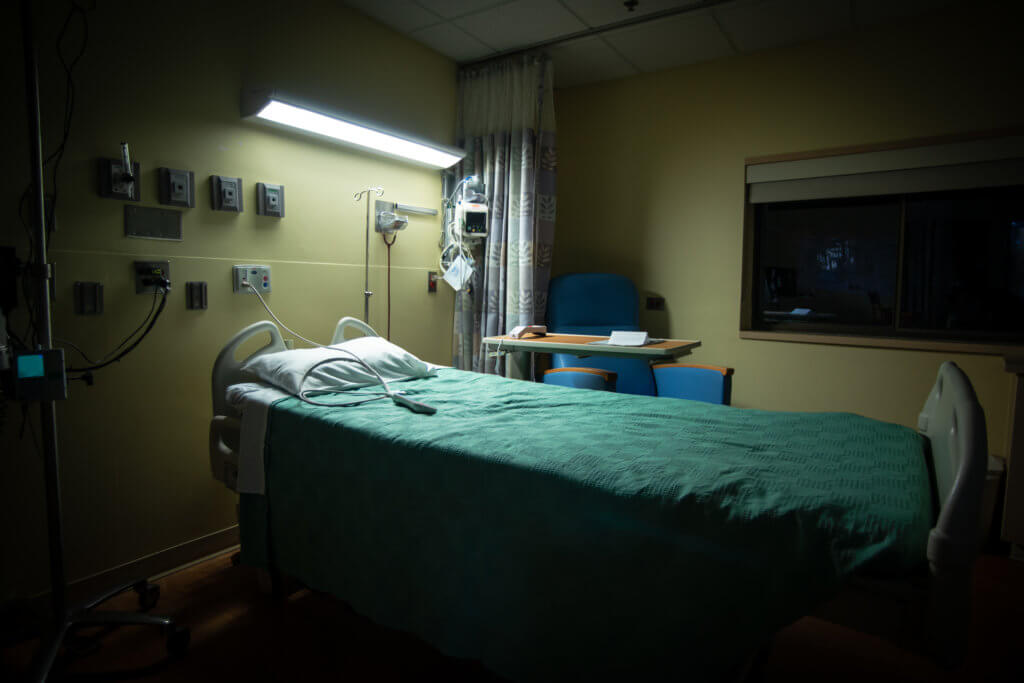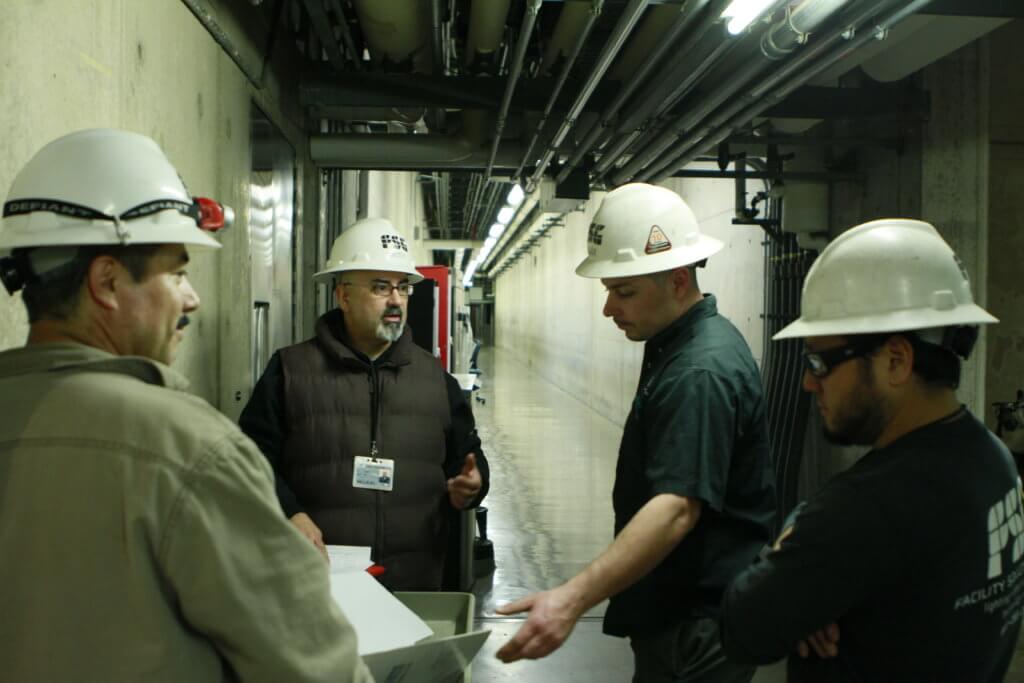Healthcare Facility Management: The Difficult Truth
Share Article

Across the shifting landscape of the U.S. healthcare system, individual hospitals and integrated networks of managed facilities are in a constant battle to meet the demands of the market while providing excellent patient care.
For facility managers in charge of maintaining the hospitals, clinics, and diagnostic centers that constitute the front lines of healthcare in our country today, the main challenge, as you would expect, is tied to available resources.
Local hospitals and regional hospital groups understand that the cost of medical care is extremely high and that much of a hospital’s annual budget will be allocated to equipment, including the expensive machines and imaging devices that support modern healthcare practices.

What’s left is mostly spent on operating budgets that support the doctors, nurses, and administrative staff working hard to provide the best care possible for patients.
For hospital facility managers, the maintenance, repair, and upgrade activities required to keep a hospital running smoothly and efficiently are often funded from the last remaining budget dollars. As such, these projects are constantly discussed, usually delayed, and sometimes canceled outright.
Two Sides of the Same Coin
Any discussion about our nation’s healthcare infrastructure will likely come down to two different versions of the same reality.
At a high level, the conversation involves the promises made by corporate brands, the imperatives of current political agendas, and the priorities established in boardrooms and public policy think tanks. These macro factors largely shape the overall public conversation about healthcare in America today.
While some critical voices are certainly heard at this level, the message is largely positive, pointing out that despite our challenges, the nation’s healthcare system connects more patients with better technology and more options than other systems.
Down on the ground, however, where real life happens, local and regional hospital facility management looks like a dark and dangerous section in the parking lot at night, and it sounds like a buzzing ballast in an old fluorescent fixture down the hall near the day surgery waiting room.

At this level, where a local E.R. often serves as the primary healthcare delivery portal for many of our neighbors, where profits are not high and in fact barely manage to sustain operations, the struggle to keep a hospital facility up and running is real.
While many well-established and well-connected hospitals in strong markets can maintain best-in-class facilities and amenities as part of a largely successful business model, most hospitals in the U.S. today face a starker reality.
Away from policy debates, press conferences, and advertising campaigns, most local and regional hospital facility managers live by the old mantra: “Use it up, wear it out, make it do or do without”.
Saving Like Their Lives Depend On It…
According to the U.S. Department of Energy’s Better Buildings website, healthcare facilities use nearly 10% of the energy consumed by the commercial sector despite representing less than 5% of commercial floorspace. All that cutting-edge technology comes at an energy cost.
Add to that the 24-hour nature of hospital operations and the required backup systems to ensure continuity of service, and it is clear where all the energy goes.
Robert Wood Johnson University Hospital Case Study
For small-market and regional hospitals dealing with inadequate resources and impossible budgets, energy savings are about much more than saving the earth’s climate; they are about saving their own skins.
… And to Pay For The Things They Did During COVID
Here in 2021, with the worst of last year’s coronavirus pandemic seemingly behind us, U.S. hospitals continue to struggle with the legacy of COVID-19.
Many hospitals underwent emergency upgrades during the height of the pandemic, mostly involving ventilation systems designed to manage indoor air quality.
While these systems undoubtedly saved lives and are widely expected to become standard features for healthcare facilities in a viral age, they do require more energy to run.

For quite a few local and regional hospitals, the new equipment purchases in 2020 and early 2021 have forced hospital facility managers to once again search for OPEX savings wherever they can, as soon as possible.
Good news is not impossible to find, however. Many hospitals and clinics that were due for a lighting upgrade before 2020 are finding the project to be much more advantageous now.
As a number of smaller hospitals have already learned, the energy savings to be realized through the latest innovations in LED lighting and controls can go a long way toward paying for last year’s expensive COVID-19 ventilation upgrades.
FSG: Delivering Success For Hospitals
At FSG, we absolutely understand the choices local and regional hospital facility managers face today. In fact, a large part of our focus in recent years has been dedicated to finding new ways to solve their problems and promote their success.
When we get the call from a local hospital or regional health system, we prioritize listening first and fully understanding the circumstances on the ground at the hospital.
MD Anderson Proton Therapy Center Case Study
Most often, our hospital customers are interested in finding ways to save money with their lighting systems. In some cases, a lighting retrofit might only be one part of a larger project to upgrade a facility.
Regardless of the scope of work involved, we begin every hospital project by defining the outcome our customer needs and expects and making sure every member of our project team views those needs and expectations as mission-critical project deliverables.
Lasting Value Through a Guided Service Offering
For each new hospital project we undertake, we begin by auditing the facility, referencing all available engineering and architectural documentation while also conducting an on-site review to arrive at an accurate understanding of the situation.
Our project management team brings so many lessons learned to this task, earned over decades of experience in hospitals across the country. There is very little that gets by the attentive eyes of our facility auditors.

Next, we step back to create a line-by-line contract proposal to match the realities at the individual hospital location, and tailored to address the most active and urgent pain points for the facility.
Sometimes, we provide Indefinite Delivery, Indefinite Quantity (IDIQ) contract proposals that address each of the customer’s identified needs while still allowing them the flexibility to tailor the service offering as current conditions dictate.
On other jobs, we might suggest a Lighting as a Service (LaaS) model rooted in the energy savings produced by the project. When the project is funded by those savings on a monthly basis, hospitals can keep their CAPEX cash on hand, and move the expense over to the operational side of the business.
Our proposals are designed to deliver maximum transparency in both top-line project costs and bottom-line product specifications. With an understanding that every hospital project represents a difficult allocation of very precious resources, FSG provides clear ROI and IRR values for hospital administrators.
For our hospital customers, the most important thing to understand is this: we offer solutions for your facility challenges, and we will happily work with your particular situation to structure our service offering in a way that promotes your success.
By meeting our customers where they live and on their terms, and by starting with an accurate audit that clearly identifies the conditions at their facility, we begin each new project with a shared mission, a common understanding, and clear communication to support success.
In our experience, this approach has proven to be a lifesaver for legacy hospitals and clinics whose communities continue to depend upon them even as time and age have taken a toll on their facilities.
Your Hospital Facility Support Professionals
In recent years, FSG has distinguished itself as a reliable vendor providing unequaled service for local and regional hospitals, clinics, diagnostic centers, and health systems. Our case studies highlight many of the ways we have delivered lasting value to our customers over the years.
Too many hospital facility managers face almost impossible choices as they struggle to provide vital services to the community, stay current with the latest medical technology, and maintain aging facilities with inefficient electrical and lighting systems.
At FSG, we are proud of every project we complete. Still, we are especially mindful of the value we can provide to local hospitals and the facility managers who work so tirelessly to maintain them.
To discuss some of the ways FSG can work for you and with you to maintain or upgrade your hospital, clinic, or diagnostic center, call (877) 293-6689 or fill out the form below.


















